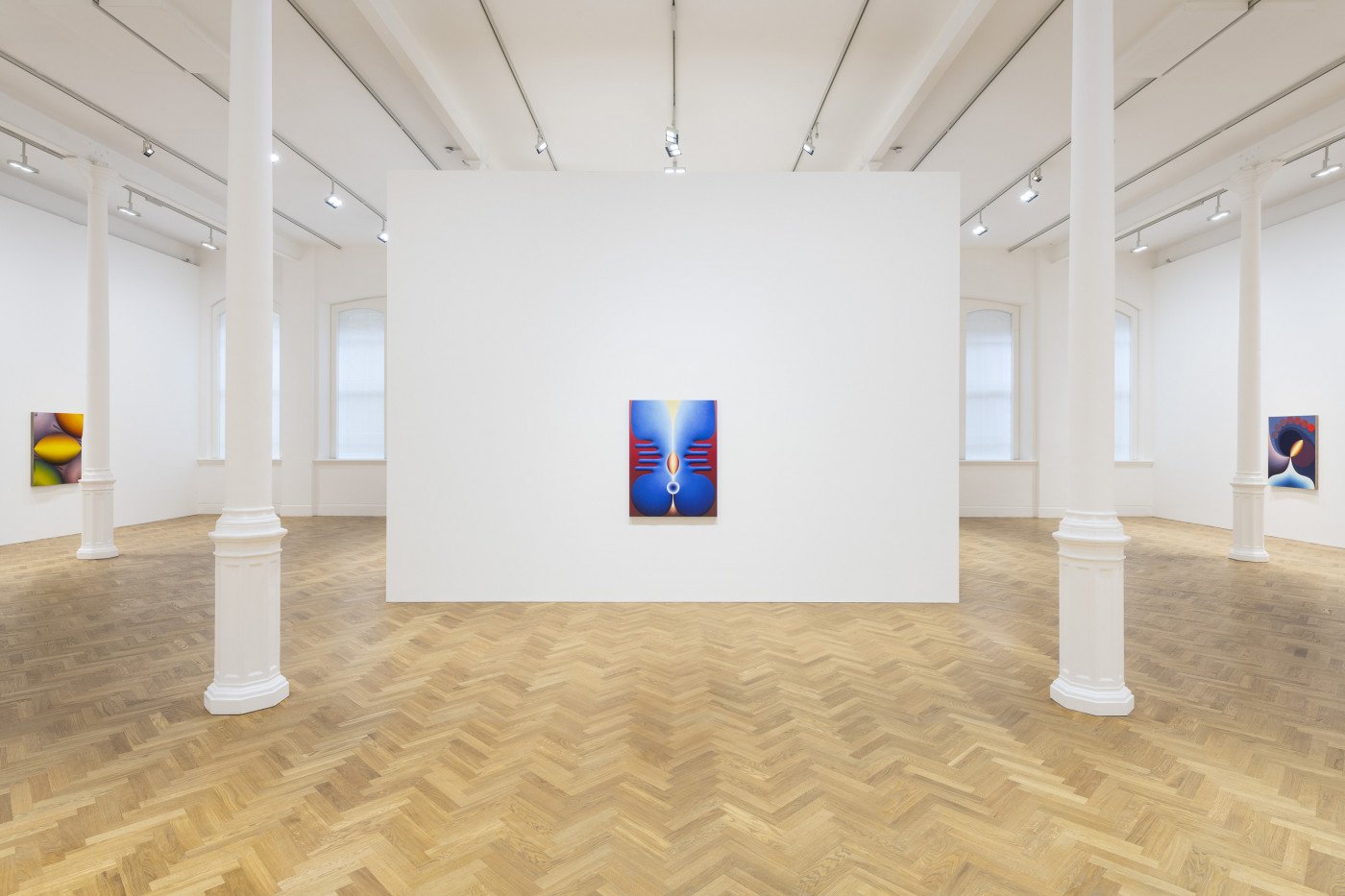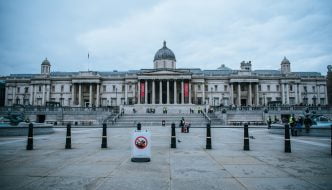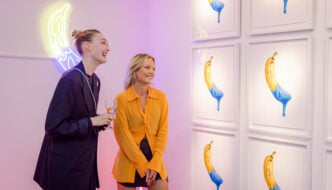
All photos courtesy of Pace Gallery, London
The Pace Gallery’s blindingly white exhibition space provides the perfect setting for Loie Hollowell’s Dominant/Recessive, an exhibition that, unlike many exhibitions I’ve seen recently, feels important.
The works – colourful abstract illustrations of sexuality and pregnancy – are painted in oil and acrylic on linen panels with bulbous, round, foam shapes protruding out and towards the viewer’s face. The vacantly white walls ensure that the paintings loom out at you with their stark colours, simple forms and 3D presence.
It seems almost as if the artist is acknowledging changes in the viewer’s perspective and consciously altering the traditionally static form of the painting. It’s clear that the impact of film, television and the internet has altered what we find interesting visually – not just in subject but also in form. In making it seem as though parts of the works are trying to escape the static realm of the frame with their globose protrusions (there is a conspicuous lack of frames in the exhibition), Hollowell adds a very literal third dimension for the viewer to consider. Add this dimension to the overarching theme of the body and humanism, in an age where people are so radically detached from the images they see, and it becomes a fascinating meditation on our engagement with bodies and images.
Her use of form and the shining effects of her brushwork evoke an aesthetic mysticism somewhat akin to Hilma AF Klint’s works. But I think it would be wrong to say that the works contain any of the religious fervour of Klint.

Full disclosure: I first saw a particularly unhealthy looking pair of bollocks in the left-hand painting. In fact, it depicts menstruation
In fact, the close-up perspectives used in creating the cross-sections of bodies make the works seem almost scientific. It’s as though Hollowell has borrowed the visual language of religious art and manipulated it to express the beauty of the human body’s biology and the human process of conceiving a child. This continuation of her humanist mantra distances her from Klint’s iconography, re-emphasising the importance of corporeality by juxtaposing it against a Klintian visual style.
The viewer sees the work in stages. In the first stage, you see the rounded, fleshy forms and immediately identify them as human – despite not knowing exactly which part of a human they represent. Placed side by side there appears to be a heaven and hell dialectic represented by the glowing halo (left) and the discoloured skin/hellish red (right).
In the second stage, the viewer recognises particular body parts in the forms: a glowing clitoris, the lips of the labia and the blood of menstruation. Though the forms are more clearly defined in this stage, the images themselves remain abstract. As soon as you have a grasp of what they are their meaning becomes blurred.
In the third stage, you recognise the purpose of the 3D parts – why Hollowell has chosen these specific areas for protrusion and how the parts that remain 2D have the appearance of 3D shapes. Are the 3D sections attempts to communicate with the viewer more specifically? Are they meant to emphasise the point of the works more clearly or blur the meaning further by adding a formal variation to an already complex, abstract image? The third stage is an absolute riot.
If you want further information, the fourth stage comes with the middle room where smaller versions of the paintings are hung on the walls with Hollowell’s annotations and title suggestions. Here you get to see some of the artistic process: how the work came to be 3D (she credits her husband, a sculptor), why she chose to enlarge them, her jokes and thoughts about each image and how she worked through various colour combinations on the same image to accentuate the ethereal yet human aura of the paintings.
Whether you want to enjoy the works on a simply aesthetic level – one often relegated to relative insignificance by contemporary art – or on a conceptual level, Hollowell’s exhibition is fascinating, beautiful and innovative.

Filed under: Art & Photography
Tagged with: Dominant/Recessive, female artist, Hilma AF Klint, Loie Hollowell, London, menstruation, Pace Gallery



Comments